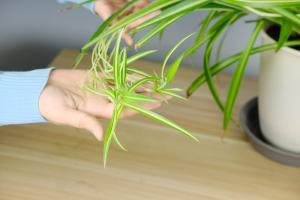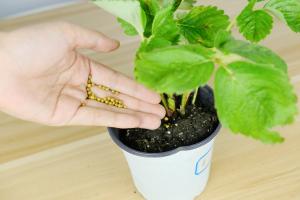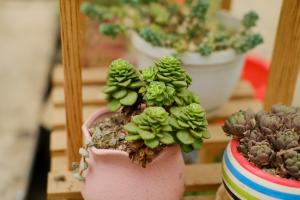Can Begonias Survive as Inside Potted Plants?
Begonias are beautiful, subtropical plants with unique foliage and colorful flowers. They are typically grown outdoors in gardens, but many people wonder if these plants can also thrive as inside potted plants. The answer is yes, begonias can do well as houseplants, but they do require some care and attention to keep them healthy.
Choosing the Right Begonia Variety
There are many varieties of begonias, and some do better than others as inside potted plants. For example, rex begonias have large, decorative leaves and are often grown for their foliage rather than flowers. They prefer lower light levels and more humidity, making them ideal for indoor growing. Tuberous begonias, on the other hand, are known for their vibrant flowers and require more light and direct sun exposure to bloom. Therefore, it's important to choose the right variety for your indoor growing environment.
Providing Adequate Light
Begonias need bright, indirect light to thrive. Place them near a window that receives bright, filtered light, or provide artificial light sources if natural light is limited. Avoid placing begonias in direct sunlight, as this can lead to scorched leaves.
Maintaining Proper Watering Habits
Overwatering is a common mistake when growing begonias inside as potted plants. The soil should be allowed to dry out slightly between waterings to prevent waterlogged roots, which can cause rot. On the other hand, underwatering can also be detrimental to the plant's health, leading to wilted leaves and stunted growth. Water begonias thoroughly and allow the excess water to drain out of the pot before replacing it on a saucer or tray.
Providing Adequate Humidity
Begonias thrive in high humidity environments. To increase humidity, place a tray of water near the plants or use a humidifier. Grouping plants together can also increase the level of humidity around them. Avoid placing begonias near dry air sources like air conditioners or heating vents.
Fertilizing Begonias
Begonias require regular fertilization to achieve optimal growth and flowering. Fertilize every two to three weeks using a balanced, water-soluble fertilizer, following the manufacturer's recommendations. Avoid over-fertilizing, as this can cause salt buildup in the soil.
Controlling Pests and Diseases
Begonias can be susceptible to pests like mealybugs, spider mites, and aphids, as well as fungal diseases like powdery mildew and bacterial leaf spot. Inspect plants regularly for signs of infestation or disease and treat promptly with insecticidal soap or fungicide, as appropriate. Isolate infected plants to prevent further spread to other nearby plants.
Conclusion
Begonias are beautiful and rewarding plants to grow as inside potted plants. With proper care and attention, they can thrive in indoor environments, providing colorful blooms and unique foliage. By following the guidelines outlined above, you can successfully grow and enjoy begonias in your home.

 how many times do yo...
how many times do yo... how many planted tre...
how many planted tre... how many pine trees ...
how many pine trees ... how many pecan trees...
how many pecan trees... how many plants comp...
how many plants comp... how many plants can ...
how many plants can ... how many plants and ...
how many plants and ... how many pepper plan...
how many pepper plan...






























